Keep them coming back for more
They say familiarity breeds contempt.
While that might be a scapegoat for a few rocky relationships, it’s certainly not true when it comes to business.
In business, familiarity is reassuring. Knowing what to expect (and, more importantly, getting it each time) is attractive. Familiarity is personal. It’s nice when they know your name, your favourite table, your size, your usual.
No surprise then that this translates seamlessly from traditional retail to online. Returning users stay longer, they engage more, and they spend more money.
Returning users vs New users
Returning users:
- Spend more time on your website
- Visit more pages
- Read more content
- Are more likely to register
- Are more likely to buy in the first place
- Are more likely to spend more

Playing hard to get
Not a customer yet? That’s ok. Plenty of research shows people need to see your marketing message several times, in different ways, before they buy.
You’ve probably seen the stats below on LinkedIn or Twitter? They claim it takes between 5 and 12 contacts before the vast majority of sales are made. Maybe it’s made up, who knows. But think about it. How many times do you speak to your clients? It’s rare that a sale happens on the first few contacts.

What the FRUC?
So how do you encourage repeat visits to your website?
How can you get people coming back for more?
The answer’s not a mystery, it’s all about your FRUC. Search engines love Fresh, Relevant, Useful Content because real people do too.
Here are 11 ideas for you, with a mix for e-commerce businesses, service-based businesses, and not-for-profits. Remember, if you don’t have time to read them all right now, feel free to pop back later.

#1 Personalisation
Remember we said it’s nice when they know your name, your favourite table, your size, your usual. That’s personalisation, and you can do it online too. The best websites remember your details, they remember your preferences. They know where you like things sent. Clothing shops know what size you wear.
They probably know what you did last summer. OK, that’s maybe a bit creepy but they do know what you bought last time, so making reorders simple and easy is the way forward. Not only that but previous purchases provide unique insight into what other things you might like to buy. Call-to-actions can change depending on what the user might be more interested in doing this time as opposed to last time. Personalised offers can be made available based on order history.
Obviously Netflix change their homepage based on your interests. But did you know, Netflix also change their film thumbnails? Yep, each title has a variety of thumbnails, and which one you’re shown is based on what you’ve watched in the past and what you’re more likely to click.
#2 Fresh produce
Shop keepers change their window display to say “Hey you, come on in, see what’s new” and online it’s no different. If you want to keep people coming back then you need to make a fuss about your brand new stuff.
Your homepage should regularly change to reflect this, just like a window display. So should your ads and social media posts. It doesn’t matter if you’re not in fashion, highlight ‘this just in’, ‘limited edition’, ‘editor’s choice’ as well as new seasons and trends. Just like restaurants change their menus, whatever you sell you can mix it up too.
Don’t let your site become a dusty old basement of excess baggage, freshen up the collection. And if it ain’t selling, move it on with a little encouragement…
#3 Discount sales
Arguably no more effective way of pulling the crowds than a sale. Add some urgency with a seasonal date driven offer, or drastically discount some end-of-line items. Perhaps advertise a 3 for 2 offer. That seems to work quite well for Boots, right? It doesn’t have to be your whole range. You often only have to discount a few things to increase sales across the store.
How about releasing an early bird preview to existing customers (with VIP discount of course). And if your margins aren’t huge, don’t panic. Why not do a weekend of free delivery, or other incentives like a free goodie bag, box of chocolates, limited edition print or product sample.
However compelling your offer is, a successful sale is only as effective as your outreach marketing. A horn is only loud if you give it a big squeeze.
#4 Get resourceful
It’s not all about e-commerce. Sure it’s easier to woo people back if you have a rotating range of regalia. But if that’s not your bag you need to add value in other ways. What interests do your customers have that relate to what you do?
Could you add new recipes? New help videos or tutorials? How about games for the kids? Quizzes? Seasonal colouring sheets? Suggested routes for long distance runs or walks in the woods? Could you review products on the market? Or make drawings and plans available?
One surf shop website supports their community by hosting live surf reports, tide times and webcams on their website.
Whatever industry you’re in, there’s something out there that you could contribute.
#5 Digital advent calendars
Here’s a fun one you might not have thought of. ’Tis (almost) the season to be jolly so why not get planning a digital advent calendar for your business. On real advent calendars, people come back every single day and open the little door for a treat. Guess what? You can host one on your website too.
24 (or 25) reasons to return to your website and open a little door. Or click a little window, whatever. All you need to think of are 24 treats. These should probably be offers of some sort. By all means add a picture and a little message. Maybe it’s a funny video or a top tip. But if you want real people to make the daily effort then the carrot needs to be enough of a cracker.
What’s even better about a digital advent calendar with 20 or so reasons to return to your site? 20 or so social media posts and 20 or so emails. Although, if you’re going to do the emails, just make sure it’s worth it! Hey, you might be interested to know we previously wrote about the psychology of advent calendars. Worth a read.
#6 Blog posts
YES, YES, we know it’s 2019, not 1999, but listen up. While blogging might’ve found fame 20 years ago, it’s just as huge today. And such an effective way to add regular content that your users will find interesting.
According to Hubspot, 55% of marketers say blog content creation is their top inbound marketing priority. And 43% of B2B marketers say blogging is their most important type of content.
But surprisingly, we’d estimate that 75% of websites in the world, still don’t have one. Write about something useful to your customers, comment on industry events or examine seasonal trends.
#6 Blog posts
YES, YES, we know it’s 2019, not 1999, but listen up. While blogging might’ve found fame 20 years ago, it’s just as huge today. And such an effective way to add regular content that your users will find interesting.
According to Hubspot, 55% of marketers say blog content creation is their top inbound marketing priority. And 43% of B2B marketers say blogging is their most important type of content.
But surprisingly, we’d estimate that 75% of websites in the world, still don’t have one. Write about something useful to your customers, comment on industry events or examine seasonal trends.
#7 Whitepapers
We spoke about Whitepapers last month as a way to position yourself as an expert. You can also use them to boost your E.A.T.s and backlink repertoire. What’s an E.A.T? Well, when it comes to optimising your website, E.A.T. stands for Expertise, Authority and Trust.
Level up all these things by publishing whitepapers on your site. A step up from the humble blog, a whitepaper is a term for an essay, article or helpful guide on a particular subject within an industry or area of interest. Often backed up by a study or research of some sort, so it’s more legit and not just the frugal thoughts of Felicity from finance.
#8 Community
One big reason people return to websites is because they feel part of a community. That could be about keeping up to date with the latest news and events from a sports club, being a fan of a particular brand, or just hanging out with fellow crafters in Wilma’s wonderful world of wool.
Let your website be the campfire for like-minded people to gather around. Build and serve a community to earn the opportunity to recommend products to an engaged audience. If your website hosts a forum, then that’s perhaps the ultimate. But it doesn’t have to be that full-on to invite audience participation.
You could run a community blog, where other users can publish their posts. If that sounds scary, maybe just do a few guest features. Encourage comments and reviews. Post helpful videos and reply to questions. Community is about help and belonging. That’s enough, we’re choking up here.
#9 Events
People love to know what’s happening. So a great way to get people back onto your site is news about events, or better still booking the events. You could be a clothing company offering pizza, beer and campfire get togethers. Or a tipi hire company with open days. Or the go-to list for local charity events. How about advertising fitness events like crossfit, triathlon or distance running? If you own a cafe, restaurant or bar, you could do themed culinary nights, or advertise live bands.
It’s got to fit with your product or brand story of course, but the list of possibilities is endless. Besides, you look smart. As an expert in your field, you could host regular webinars and live stream them via your website. You could even host social media Q&A sessions (on Twitter or Facebook) and still see referral traffic spike.
#10 Loyalty rewards
Do you remember Esso Tiger Tokens? What fun fingering the rewards catalogue. Ahh, anyway, loyalty incentives are a sure fire way to encourage people continue to spend their dough with you, rather than the bad guys. It makes sense, right? If you’re gonna buy the stuff anyway, you may as well get rewarded for it. Everyone from your local falafel stand to retail giants offer loyalty incentives so it’s worth thinking about whether it could work for you too.
If we’re talking online then it can be loyalty points that you can exchange. So you can encourage repeat business from your stead-fast community of supportive loyal customers by… effectively paying them off. Ha. Tiered pricing could be an option. Or maybe by including them in a VIP club of some sort with other rewards.
If you don’t sell anything, maybe reward individual contributions (like TripAdvisor do), or repeat visits like streaks, perhaps accompanied by messages encouraging them to keep it up.
#11 Encourage email signups
We touched upon this in the first point. Not emails in particular, but outreach. Just like all the best destinations, websites need signposts. One of the best ways to bring people back to your site is with email. 81% of SMBs still rely on email as their primary customer acquisition channel. 49% of people said they’d like to receive promotional emails from their favourite brands.
So go ahead, encourage users to sign up for updates via your website. If they’ve enjoyed a piece of content, ask if they’d like to subscribe to more. If they’re shopping, ask if they’d like to receive updates and discounts.
Just make sure it’s all above board with GDPR. People need to have explicitly opted in to receive the type of emails you’re going to be sending. Or, they could be an existing customer who previously bought or enquired about a similar product or service from you. That’s referred to as a soft opt-in, under PECR.
Stuck for ideas? Short of time?
Have a chat with us about adding effective content to your website. Growing your business? We publish customer-getting tips for free every month.
